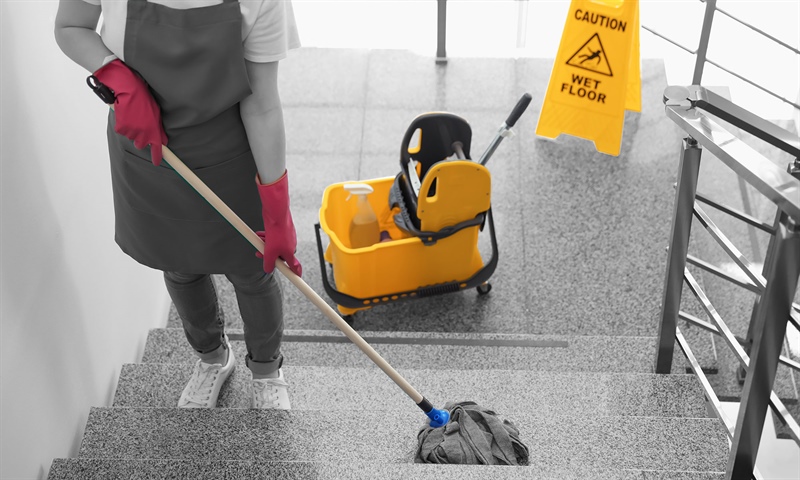What Is Building Maintenance?
Building Maintenance
Building maintenance refers to activities performed to retain and restore the functionality of residential and commercial properties. It includes tasks such as cleaning, landscaping, and electrical system maintenance. It aims to preserve a safe, functional, and comfortable environment for tenants at all times.
Overview
Building occupants expect property owners and managers to provide them with comfortable living and working environments. However, most individuals give little thought to the behind-the-scenes work required to meet these expectations.
Maintenance teams routinely inspect, repair, and replace equipment parts that keep assets running. On any given day, workers may clear snow from walkways, change HVAC filters, and conduct preventive maintenance (PM) activities to ensure continued operations.
However, as soon as occupants notice a plumbing issue, maintenance takes center stage. Translation: Maintenance is “out of sight, out of mind” until something goes wrong. For this reason, the best maintenance teams mostly go unnoticed because they prevent major breakdowns, inconveniences, and safety hazards from occurring with proactive maintenance that tenants may not notice.
Of course, building maintenance isn’t only beneficial to tenants. Building owners maintain the resale value of their properties by keeping assets in good working condition. Depending on the type of facility, it may require a “Jack of all trades” or several workers with varying payroll specializations.
Types of Building Maintenance
● Routine Maintenance: These are scheduled preventive maintenance tasks to protect a building from decay and preserve its functionality. Routine maintenance tasks can be performed daily, weekly, or periodically on a schedule. They include cleaning, garbage removal, lubrication of hinges, an inspection of utility systems, repainting, and weeding.
● Preventive Maintenance: Preventive maintenance tasks prevent damage to the building and retain its structural integrity. They enhance the durability of the building. PM also includes sustainable preventive measures during the building’s design and construction to withstand storms, floods, and other calamities.
● Corrective Maintenance: These are activities intended to restore the functionality and comfort of a building. Managers need to have a corrective maintenance strategy in place as it’s impossible to completely prevent damage or decay. Corrective maintenance ensures that everything is back in operation as soon as possible.



Types of Building Maintenance Workers
Different maintenance tasks require different areas of specialties. Workers are categorized depending on their responsibilities and experience. These are the different types of building maintenance workers:
- Janitors: They handle the general cleaning of a building. Janitors mop the floors, clean bathrooms, wash windows and doors, and vacuum carpets. In a residential building, they only clean the common areas.
- Maintenance Technicians: Maintenance technicians deal with tasks that require specialized skills. They inspect, maintain, and repair a building’s HVAC and utility systems. Maintenance technicians are usually assigned tasks through work orders on a Computerized Maintenance Management System (CMMS).
- Maintenance Supervisors: They oversee maintenance planning and scheduling for a building. Supervisors manage maintenance workers and ensure that maintenance tasks are completed as required. In some cases, maintenance supervisors are also involved in the hiring and training of maintenance workers.
Industries That Practice Building Maintenance
Facilities that rely on building maintenance include:
- Residential Facilities: Residential facilities need maintenance for both indoor and outdoor areas. Inspections, maintenance, and repairs are regularly conducted to ensure everything is in good working condition.
- Business Premises: Every building premise requires maintenance services. Most smaller premises outsource maintenance services while larger businesses have an in-house maintenance department to oversee maintenance.
- Government Facilities: Government buildings such as post offices, city buildings, and libraries require maintenance to stay in good condition for public use and safety.
Certifications and Training for Building Maintenance Workers
Workers have several options to grow their skills and advance their careers. Training and certification programs worth considering include:
- HVAC Certification: This certification is offered to maintenance workers who’ve demonstrated competence in handling HVAC systems. The National Association of Home Builders and the Associated Builders and Contractors offer apprenticeships that help maintenance workers earn HVAC certification.’
- Building Systems Maintenance Certification: This covers plumbing, HVAC systems, water treatment, and efficient energy management. BOMI International awards the certification to workers who deal with building systems.
- Building Operator Certification: Approved institutions offer level one and level two maintenance training with candidates awarded the Building Operator Certification. Areas covered include HVAC, control point management, electrical distribution, and energy management.
Other institutions, such as the International Facilities Management Association (IFMA), offer several training programs for building maintenance workers.
Examples of Building Maintenance
- Landscaping activities such as mowing lawns and trimming shrubs.
- Inspecting outdoor lighting for damage.
- Clearing gutters and drainages.
- Cleaning outdoor spaces.
- Sealing cracks in parking lots.
- Inspecting ceilings and floors for water damage during winters.
- Replacing HVAC air filters.
- Servicing fire alarms and fire suppression systems.
- Inspecting door and window alarm systems to ensure proper operation.
Frequently Asked Questions
How Do You Manage Building Maintenance?
Running an effective program can streamline maintenance activities and save costs. The easiest way to manage building maintenance is to automate work order assignments through the use of Computerized Maintenance Management System (CMMS) software.
CMMS allows maintenance supervisors to effectively monitor inventory levels, track assets, and assign work orders to available technicians from one central database. While a preventive maintenance approach is helpful in reducing the likelihood of emergencies, equipment breakdowns are inevitable. For this reason, managers should put corrective procedures in place for quick reference. Technicians should know exactly how to respond to emergency maintenance requests and restore operations to normal as quickly as possible.
What Is a Building Maintenance Checklist?
A building maintenance checklist includes a list of tasks to be completed by technicians. The list is usually prepared by an operational manager familiar with the care needed for the building’s specific assets.
Conclusion
Property owners and managers rely on building maintenance to ensure functionality, comfort, and safety for occupants. It includes tasks such as cleaning, painting, and building systems repairs. Janitors perform routine maintenance tasks while maintenance technicians oversee specialized maintenance activities. These activities can be assigned and monitored by maintenance supervisors using CMMS software.

